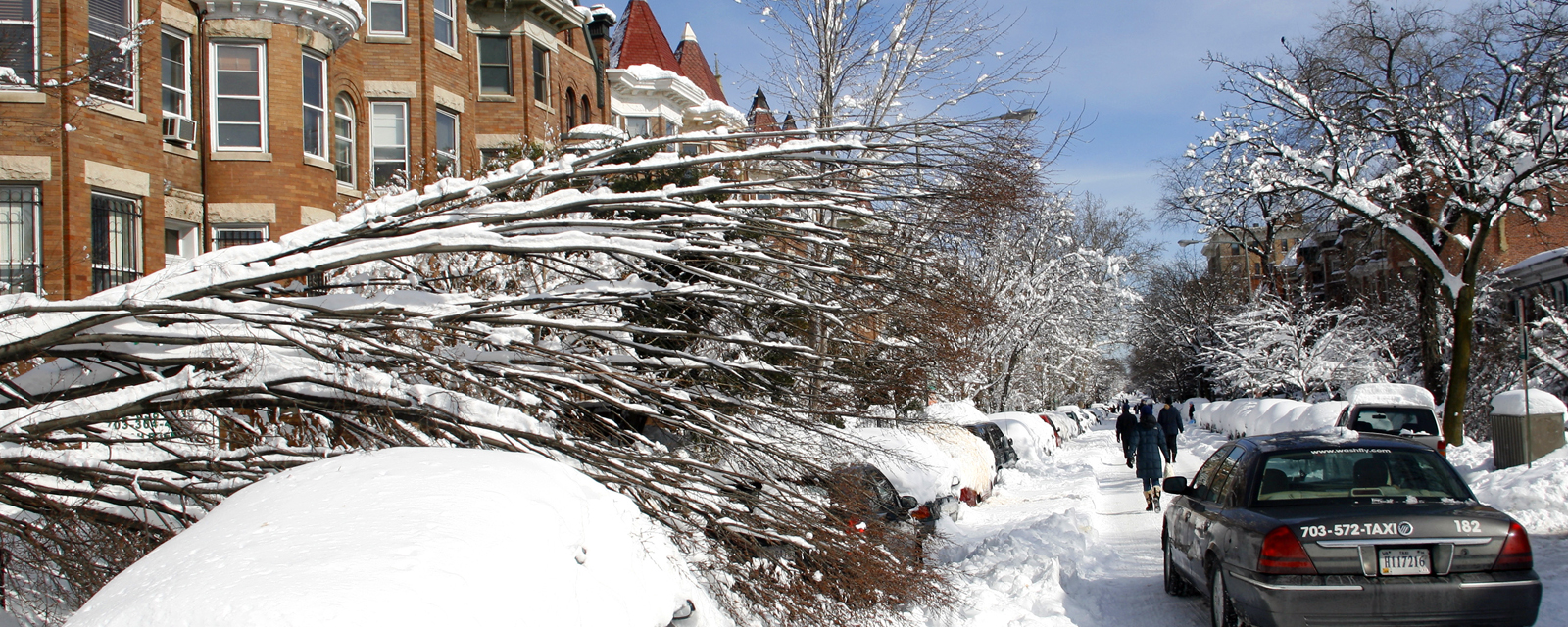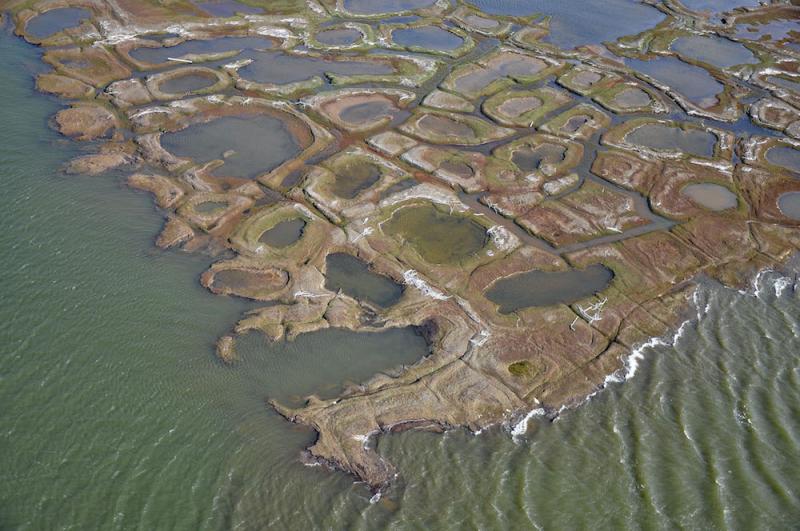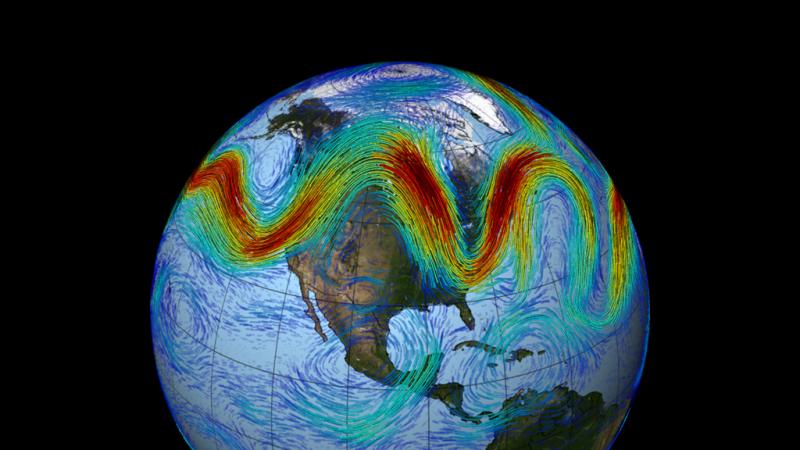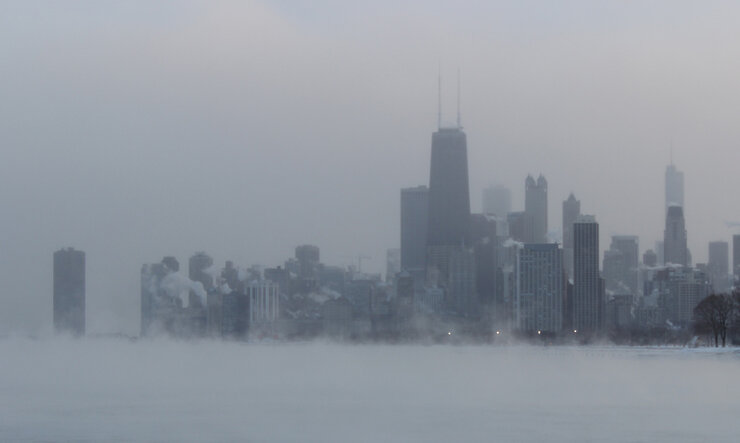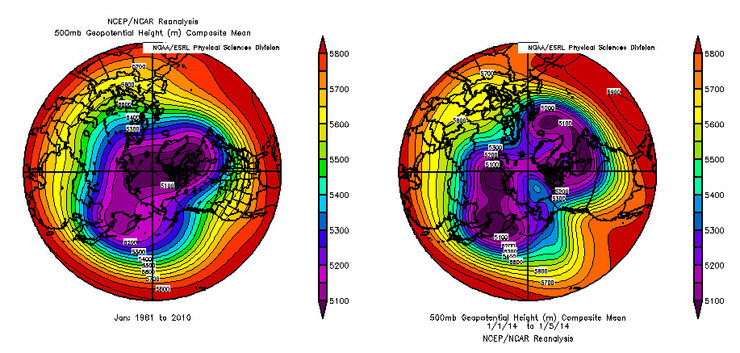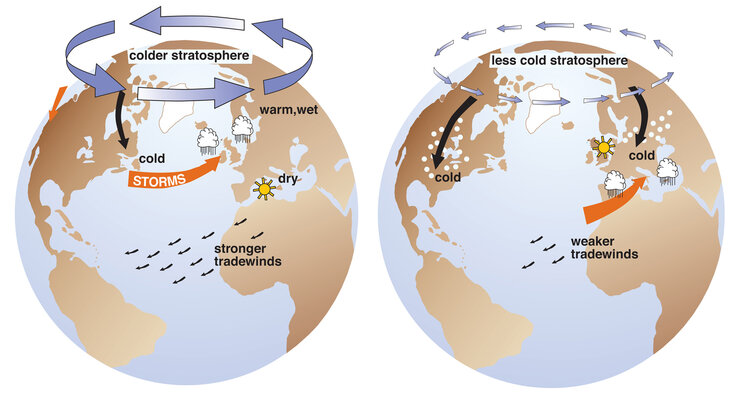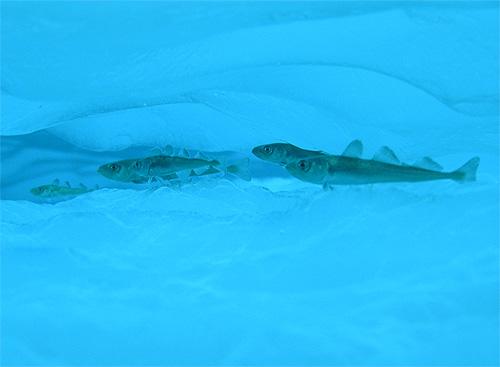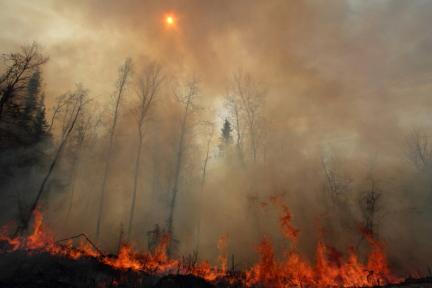The area encompassed by the Arctic Circle is approximately four percent of Earth’s surface area—a little less than the continent of Africa—yet no part of the planet is untouched by this unique and rapidly changing region.
Sea level rise
The Arctic’s melting land ice and glaciers contribute to the sea level rise happening around the world. As this ice melts, much of it ultimately flows into the sea, adding volume to the world’s oceans. According to measurements from a variety of sources, the average global sea level has risen about 20.3 cm (about 8 inches) since 1901. The pace of sea level rise is increasing. Over the past two decades, sea level has risen globally at a rate of 3.1 mm (0.12 inches) per year on average. Between 2003 and 2008, melting Arctic glaciers, ice caps, and the Greenland Ice Sheet contributed 1.3 mm (0.05 inches)—more than 40 percent—of the total global sea level rise observed each year. If greenhouse gas emissions continue to increase on their current trajectories, scientists project that global sea level may rise by an additional 0.3–1.3 meters (1 to 4 feet) by 2100.1 About 40 percent of the world’s population lives within 100 km of the world’s coasts. Sea level rise and associated storm surges pose significant threats to human lives and infrastructure, especially in these vulnerable and densely populated coastal areas. Many places are already experiencing its effects. For example, storm surge associated with Hurricane Sandy resulted in billions of dollars of damage to coastal homeowners, businesses, and transportation infrastructure. See also Sea Level Rise and Storm Surge.
Weather
Changes in the Arctic have the potential to affect weather thousands of miles away. Some scientists are concerned that magnified warming in the Arctic will alter weather patterns in the middle latitudes of the Northern Hemisphere. The question of a connection between variability in sea ice loss, air-sea exchange, and weather patterns is a current subject of research by climate scientists.
The jet stream
One of the most prominent factors influencing weather in the Northern Hemisphere is the jet stream, a meandering air current that flows around the globe in a generally eastward direction. It results from the collision of colder air masses from the Arctic with warmer air masses from the tropics. Because temperatures are increasing faster in the Arctic than in the tropics, the temperature gradient that drives the jet stream is becoming less intense. Some scientists have suggested that this could cause the jet stream to become weaker and more meandering, resulting weather patterns that are more persistent in the mid-latitudes. This could result in longer droughts, heat waves, and cold snaps in many heavily populated areas of North America and Europe.
The polar vortex
A vortex is a region within a fluid where the flow is mostly a rotational motion around a given axis. The Earth’s atmosphere, while a gas, nevertheless behaves broadly as a fluid. The polar vortex is the region of the atmosphere that contains the hemisphere’s cold air, rotating from west to east. In the Northern Hemisphere, the axis of the rotation is generally located in the Arctic.
The air within the Northern Hemisphere polar vortex is referred to as polar air or Arctic air, depending on temperature, with the Arctic air being the coldest. South of the polar vortex, the atmosphere is much warmer. The boundary between the cold air within the vortex and the warmer air to the south is a region of sharp horizontal gradients in temperature, with temperatures decreasing to the north. These sharp temperature gradients give rise to the polar front jet stream, Hence, the southern boundary of the polar vortex essentially corresponds to the location of the polar front jet stream.
The polar vortex is typically irregularly shaped, with a number of large meanders in the flow known as longwaves. Regions where the cold air dips southward are known as longwave troughs. Regions where the warm air extends northward are known as longwave ridges. The location and strength of the longwave ridges and troughs vary from week to week, and the polar vortex as a whole can also extend toward the equator or toward the pole. These variations in the polar vortex are expressed as changes in the weather, which can be quite pronounced. For example, in locations where the polar vortex is dipping strongly to the south—meaning a longwave trough is moving in—there is a sharp drop in temperature. This drop is known as a polar, or Arctic, outbreak, depending on the temperature of the invading air. Storms tend to form along the jet stream, so polar or Arctic outbreaks are often accompanied by stormy weather. These storms tend to be associated with shortwaves, which are smaller meanders embedded with the longwaves. The polar vortex and its associated longwave ridges, troughs, embedded shortwaves, and polar jet stream tend to be more pronounced in winter than during summer.
The character of the polar vortex is linked to the phase of the Arctic Oscillation, a large-scale climate pattern that influences weather throughout the Northern Hemisphere. When the Arctic Oscillation switches to a positive phase, the polar vortex tends to extend toward the pole. When the Arctic Oscillation switches to a negative phase, it tends to expand further to the south and the longwave ridges and troughs are more pronounced. The polar outbreak over the central United States during January 1–5, 2014, may have been related to a shift towards the negative phase of the Arctic Oscillation. Some scientists link changes in the vortex to strong warming in the Arctic, linked to the ongoing loss of its sea ice cover. This proposed connection is controversial and the subject of considerable scientific research.
Ocean currents
Changes in the Arctic could affect ocean circulation around the world. As Arctic ice melts, the Arctic Ocean receives an influx of fresh, relatively warm water, reducing its salinity and density, and affecting the global deep-ocean heat transport system that distributes heat energy around the planet. This heat transport system—sometimes referred to as Earth's thermohaline circulation—is driven by differences in density, and it plays a major role in controlling the Earth's climate. Ocean circulation, in turn, is a major driver for weather patterns, both in the Arctic and around the world. Scientists cannot currently predict with a high degree of certainty exactly how climate change will affect ocean circulation.
One possibility researchers are considering is whether changes in the Arctic Ocean might slow a major current in the Atlantic Ocean called the Atlantic meridional overturning circulation (AMOC). Some scientists believe that the AMOC is beginning to slow. Current models predict that the AMOC will slow, but not stop, during the 21st century. A significant change in the strength of the AMOC would alter winds, temperatures, and precipitation patterns around the globe, with potentially strong local effects along the east coast of the United States and the west coast of northern European countries.
In the Pacific Ocean, researchers documented a shift in a long-lived climate pattern called the Pacific Decadal Oscillation (PDO) from a cooler pattern to a warmer one around 1976. The PDO is a long-term fluctuation of ocean temperatures that alternates between warm and cool phases every 20 to 30 years. The underlying long-term warming trend has moderated the effects of the more recent shift of the PDO to its cooler phase in the early 2000s. The overall warming of the Northern Pacific Ocean is associated with more extremely hot days and fewer extremely cold days in Alaska.
Other research in the Pacific Ocean shows that as low-latitude surface waters continue warming, ocean patterns such as the El Niño Southern Oscillation (ENSO) may strengthen and become even bigger players in the world’s climate.
Ecosystems and biodiversity
Ten percent of the world’s fish catch comes from Arctic and subarctic waters, and about half of the U.S. fish catch comes from subarctic waters. Changes in the Arctic marine environment could have important implications for this global food source, with potential effects on local communities, regional labor markets, and international trade. On one hand, some changes in the Arctic could improve the outlook for fishermen. As sea routes open earlier in the spring and freeze later in the fall, it gets easier for fishing boats to access the Arctic’s marine bounty. In addition, some favorite southern species are becoming more common farther north. For example, as populations of Pacific salmon have moved into Arctic waters, they may become a food source for subsistence fishermen along Alaska’s north coast.
On the other hand, new species entering an existing ecosystem may threaten existing populations. Atlantic cod, for example, have been displacing the endemic polar cod in the waters surrounding the Norwegian archipelago Svalbard. In addition, rising temperatures and an influx of fresh water from melting ice can cause rippling effects through the marine food chain. In the North Atlantic, scientists project that ocean warming will cause shifts in the spawning and feeding grounds of several economically-important fish populations, including Arctic cod, herring, and capelin.
In addition to their contributions to the global food supply, Arctic ecosystems are valuable for the biodiversity they represent. When species become extinct and the world’s biodiversity decreases, we may lose the opportunity to benefit from important biological resources that could yield benefits in medicine, engineering, materials design, and other applications. Some areas of the Arctic are so remote and inaccessible that their ecosystems have not been studied at all. As the Arctic continues to warm and ecosystems reorganize, it is quite possible that unique Arctic species could disappear without our even knowing it.
Accelerating further climate change
Many of the shifts underway in the Arctic are likely to contribute to further climate changes—both in the Arctic and around the globe. As the area covered by reflective, white snow and ice shrinks, darker surfaces like tundra and water—which absorb much more sunlight—are left behind. As a result, the reflectivity, or albedo, of the region decreases, causing more heat to be absorbed and the surface and air temperature to rise. In turn, these rising temperatures cause more snow and ice to melt, and the cycle begins again. Scientists believe the albedo effect is one of the major reasons why the Arctic is warming more quickly than the rest of the planet. Some scientists have suggested that this effect may be exacerbated by soot from burning fuels and vegetation in the Arctic—as well as in the lower latitudes, which finds its way into the Arctic—that darkens the remaining snow and ice. In addition, warmer air holds more water vapor, which traps even more heat in the lower atmosphere.
Locked within the Arctic’s ancient ice and permafrost are vast quantities of carbon, frozen as either plant matter or within icy crystals of methane gas. If warming temperatures were to release these ancient carbon stores into the atmosphere, they would exacerbate the greenhouse effect and have a potentially large impact on the Earth’s climate. The carbon stores have accumulated in Arctic soils because decomposition releases carbon from cold wet soils more slowly than it has been accumulated by plants. If large areas of permafrost were to thaw, much of that previously frozen plant matter would begin to decompose, releasing large quantities of carbon into the atmosphere in the form of carbon dioxide or methane.
Wildfires could also exacerbate climate change in three ways. First, because they burn plant material, they release carbon. Second, the dark, charred ground they leave behind increases warming because of the albedo effect. Finally, if a fire is severe enough to burn the surface organic layer of soil, it can speed the thawing of permafrost below, accelerating the release of carbon from the previously frozen soil.
The preceding text is excerpted and abridged from the following sources:
- Arctic Matters: The Global Connection to Changes in the Arctic.
- Francis, J.A., and S.J. Vavrus (2012): Evidence linking Arctic amplification to extreme weather in mid-latitudes. Geophysical Research Letters, 39, L06801, doi:10.1029/2012GL051000.
- Overland, J.E., and M. Wang (2010): Large-scale atmospheric circulation changes are associated with the recent loss of Arctic sea ice. Tellus, 62, 1–9, doi: 10.1111/j.1600-0870.2009.00421.x.
- 1. National Resource Council, Division of Earth and Life Sciences, Polar Research Board (2015): Arctic Matters: The Global Connection to Changes in the Arctic. National Academy of Science, 32 pp.

